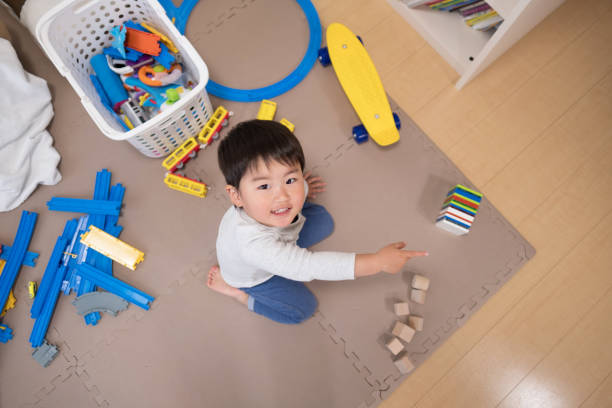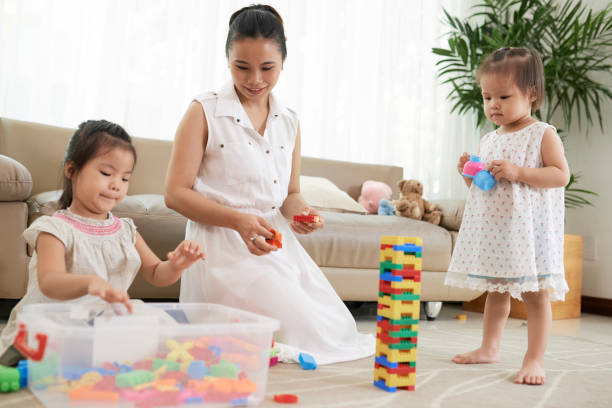Let’s talk about toys – those colourful, noisy, and sometimes seemingly endless collections that fill our homes, especially during festive seasons or birthday celebrations. You know the scene: a child surrounded by a mountain of presents, tearing through the wrapping paper with lightning speed, eyes wide with excitement. But have you ever wondered, amidst the chaos and excitement, whether fewer toys for toddlers might actually be better?
Influence of the Number of Toys in the Environment on Toddler’s Play
To dive into this question, let’s take a peek into a fascinating study conducted by Dauch and colleagues in 2018. Picture this: 36 toddlers, aged between 18 and 30 months, along with their parents, stepping into a carefully crafted play environment. These kiddos, from various backgrounds but with typical developmental milestones, were about to embark on a toy-filled adventure.
In this study, the researchers introduced 32 diverse toys, ranging from educational shapes and colours to action-packed building sets. Then, they divided the toddlers into two groups – one with only four toys and the other with a whopping 16. The goal? To see how the quantity of toys would impact the quality of play.
Toy Play Conditions and Data Collection
Now, let’s set the stage. Two identical playrooms, brimming with toys, awaited the eager participants. Each toddler, accompanied by their caregiver, embarked on three one-hour sessions of play. Meanwhile, keen-eyed observers meticulously recorded every detail – from the frequency of toy engagement to the types of play exhibited.
Results: Quality over Quantity
Here’s where it gets interesting. The results revealed a stark difference in play quality between the two groups. Toddlers in the four-toy condition exhibited more immersive and imaginative play styles compared to their counterparts in the 16-toy setup. They seemed to savour each toy, engaging in deeper interactions and exploring various play scenarios.

Image from iStock
Dauch and colleagues in 2018 concluded that fewer toys led to enhanced play experiences, fostering creativity and prolonged engagement. In essence, less truly proved to be more when it came to nurturing a child’s playtime.
Is Having Too Many Toys Overindulgence?
Now, let’s take a step back and ponder this: what does it mean to have too many toys? According to the study, the average number of toys in participants’ environments was nearly 90 – that’s a lot of toys! This aligns with the concept of childhood overindulgence, where an abundance of toys, activities, and privileges can hinder rather than enrich a child’s development.

Image from iStock
Embracing Simplicity
So, what’s the takeaway here? Well, it seems that in the world of toys, less is indeed more. By curating a thoughtfully selected collection of fewer toys for toddlers, parents can encourage deeper engagement, stimulate creativity, and promote healthy play habits. So, the next time you’re tempted to fill your shopping cart with the latest toy craze, pause and consider – perhaps your toddler might be better off with fewer toys and more opportunities for imaginative play.
ALSO READ:
Best Educational STEM Toys (4 years+) in Singapore Under $50
8 Best Toys for Speech and Language Development in Children
5 Amazing Musical Toys For Your Toddler To Boost Their Musical Talents